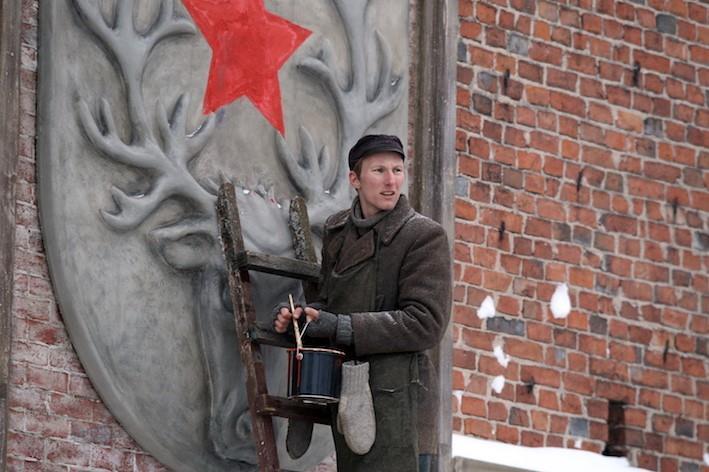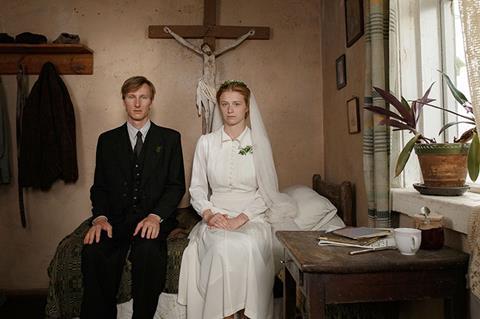Ansis is a simple sign painter in a small town in Latvia, a Baltic republic that won its independence after World War I, but lost it after being occupied by the Soviet Union and Germany within the space of a few years in the early 1940s.
In Viesturs Kairish’s endearing movie, The Sign Painter, which will be screened online by the Toronto Jewish Film Festival, which runs from June 3-13, Ansis is a figure who illustrates the change of the guard in Latvia.
During the Latvian dictatorship of Karlis Ulmanis, from 1934 to 1940, Ansis was instructed to use green paint on official signage. With the Soviets in control, from 1940 to 1941, the color changed to red. Under Nazi rule, from 1941 to 1944, the mandatory color was black.
Ansis (Davis Suharevskis), a shambling craftsman, meekly obeys the rules and blends in with the newest regime like a chameleon. But at heart, Ansis is a rebel. Bucking common antisemitic stereotypes, he courts Zisele (Brigita Cmuntova), a Jewish girl.
As he paints a building, his co-worker, an elderly man steeped in the prejudices of the day, advises him to stay clear of Zisele. “Don’t meddle with Jews,” he warns him. “They killed Christ.”

Ansis’ ailing father forbids him to see Zisele, claiming that Jews bake the blood of Christians in matzoh during Passover. The town priest urges him to “forget” his Jewish girlfriend.
Zisele’s father, Bernstein (Gundars Abolins), an Orthodox Jew and the owner of a general store, orders Ansis to stop seeing his daughter who, he falsely claims, has a boyfriend in Prague.
Naiga (Agnese Ciruke), Ansis’ old flame and the daughter of the local pharmacist, is also opposed to his relationship with Zisele.
Ansis likes both women and is torn between Zisele and Naiga. The matter is apparently resolved after Zisele moves to Riga to continue her studies, while Naiga agrees to become his paid model. Ansis aspires to be a portrait painter rather than a lowly sign painter. In pursuit of this goal, he paints Naiga in the nude and Bernstein as an exalted rebbe.

With the Soviet occupation of Latvia, Zisele returns to town as a communist functionary. When she meets Ansis, she tells him she thinks of him sometimes. But his romance with Zisele seems doomed, particularly after Bernstein urges him to marry Naiga, whose anti-communist father has been rounded up by the Soviets.
Despite everything, Zisele still has feelings for Ansis. Warning him he’s on a list of Latvians scheduled to be deported to Siberia, she advises him to leave immediately.
With Germany having wrested Latvia from the Soviet Union, latent antisemitism surfaces. “Soon the hunt for Jews will begin,” says a Latvian man with relish. Another Latvian has reservations about the Germans. “They are no better than the Russians,” he says.
When Ansis asks the priest whether he intends to hide several Jewish children, he replies, “The church is not allowed to meddle in secular affairs.”
As Ansis erects a new sign on the side of a road, he watches a procession of Jewish men, women and children being led away by German soldiers.
Still emotionally attached to Zisele, Ansis conceals her in the attic of his house, a decision to which Naiga objects. As far as she’s concerned, “the Jews” tortured her father. “It’s German propaganda,” Ansis counters.
As The Sign Painter implies, Ansis stands for decency and loyalty at a time when such qualities were in short supply, not only in Latvia but in the rest of Nazi-occupied Europe.
